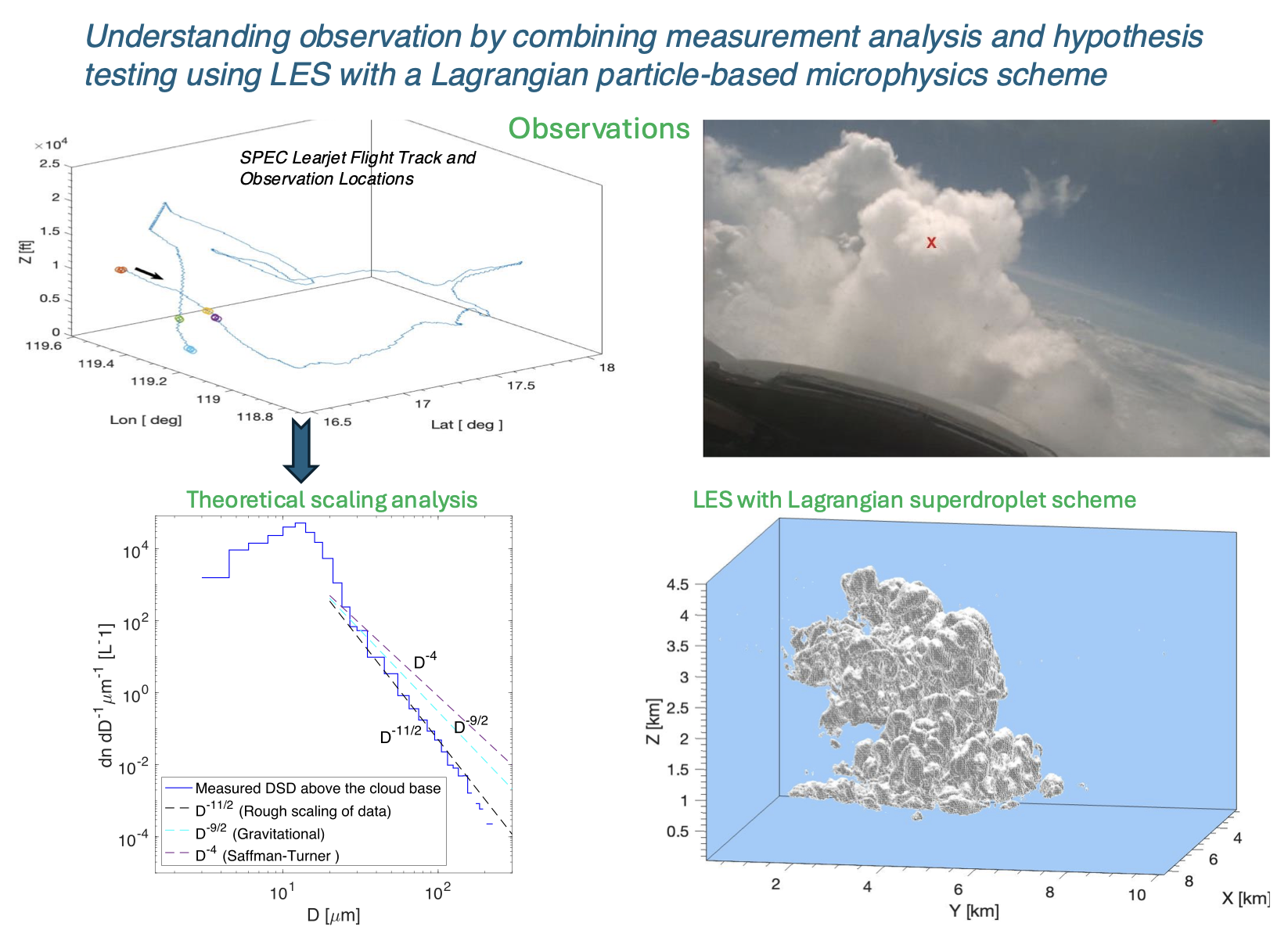Turbulent effects on droplet coalescence: a crucial factor for observed rain development
Submitter
Morrison, Hugh Clifton
— University Corporation for Atmospheric Research
Area of Research
Cloud Processes
Journal Reference
Chandrakar K, H Morrison, W Grabowski, and R Lawson. 2024. "Are turbulence effects on droplet collision–coalescence a key to understanding observed rain formation in clouds?" Proceedings of the National Academy of Sciences, 121(27), e2319664121, 10.1073/pnas.2319664121.
Science

Figure 2. Averaged drop size distributions at different altitudes (a: near cloud base to e: near cloud top) from observations in cumulus congestus clouds during CAMP2Ex (blue) and corresponding LES outputs at time = 7,500 sec using the Lagrangian microphysics scheme with gravitational drop coalescence only (red) and with turbulence effects on coalescence (black). (f) Time series of the domain-integrated rain water mass from various simulations with gravitational and turbulent collision kernels and using different giant CCN concentrations. Image modified from journal.

Figure 1. A combined investigation approach using field observations (CAMP2Ex), theoretical scaling analysis, and LES with superdroplet scheme. Images from journal except the cloud photo, which is from the CAMP2Ex campaign.
As a critical factor governing the life cycle and radiative forcing of clouds, rain formation is a key element of weather and climate. Cloud microphysics–turbulence interactions occur across a wide range of scales and are challenging to represent in atmospheric models with limited resolution. The goal of this study is to understand the role of turbulence on rain formation through its influence on drop collision coalescence in cumulus clouds.
Impact
NASA’s Cloud, Aerosol and Monsoon Processes Philippines Experiment (CAMP2Ex) observations combined with theoretical analysis and large-eddy simulations (LES) using a state-of-the-art Lagrangian particle-based microphysics scheme helped elucidate the problem of the “rain formation bottleneck.” Turbulent effects on drop coalescence were found to be critical for droplet size distribution evolution and rain initiation in cumulus congestus clouds, particularly because of the strong impact at lower cloud levels.
Summary
The flow in most clouds is turbulent, and the effects of cloud–turbulence interactions are challenging to represent in atmospheric models. It has been hypothesized that impacts of turbulence on drop coalescence strongly influence rain formation. Observations of drop size distributions in cumulus congestus clouds from CAMP2Ex, LES with the Lagrangian “superdroplet method”, and a theoretical scaling analysis are combined to provide substantial evidence of the critical impacts of turbulence on rain initiation and growth. Turbulent coalescence considerably enhances rain initiation and must be included in the model to accurately simulate the tail of drop size distributions, especially near cloud base. Large aerosols serving as “giant” cloud condensation nuclei (“giant CCN”) have little impact on rain formation in cumulus clouds when turbulence effects are considered.
Keep up with the Atmospheric Observer
Updates on ARM news, events, and opportunities delivered to your inbox
ARM User Profile
ARM welcomes users from all institutions and nations. A free ARM user account is needed to access ARM data.


















